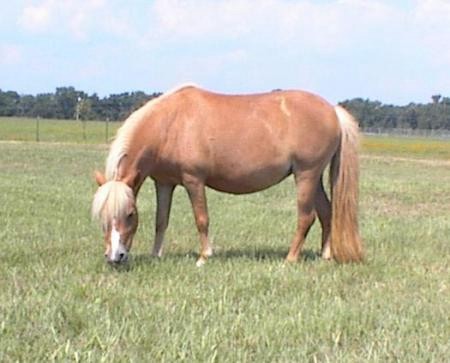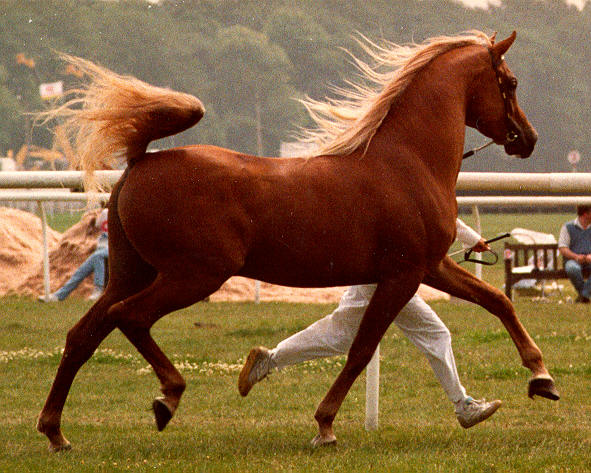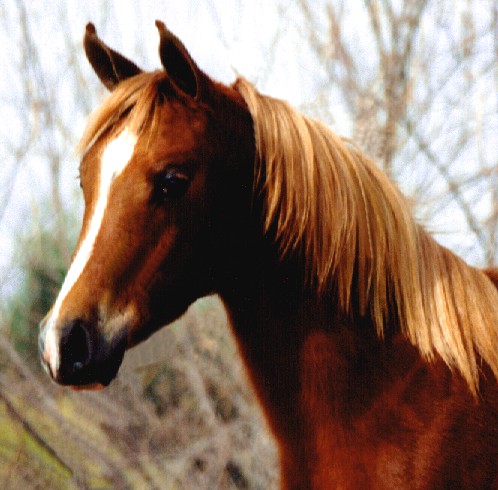Is sorrel genetically distinct from chestnut?

Sorrel is a light shade of chestnut. Some light chestnut horses may look palomino if they also have a flaxen mane and tail. Haflinger ponies, for example, are often a beautiful light chestnut with flaxen white manes and tails.
The gene that makes chestnut horses chestnut is called the extension or E locus. Three alleles (forms) of this gene are known at present, labelled E+, e and ea. E+ is the dominant allele and the coats of horses with this allele contain black eumelanin pigment. The alleles e and ea differ slightly in their molecular composition but nevertheless is reported to have the same effect on horse color, causing a switch from the production of black eumelanin pigment to red phaeomelanin pigment. Chestnut horses are homozygous for either recessive allele, or of genotype eea.
In some Western breeds, such as the American Quarter Horse, the term sorrel is commonly used for light chestnut horses. Sometimes I've even heard the two terms used interchangeably, with people describing darker chestnut horses as sorrel, but this is not really correct. In some countries, such as the UK, many horsey people may not even have heard of the term sorrel in connection with horses.
There is evidence that sorrel genetically distinct from chestnut
As long ago as 1916 McCann indicated that sorrel is genetically distinct from chestnut in Belgian Draft Horses. This is not usually considered much these days, but the two may well be distinct in some or all breeds where the two shades occur together. It would be interesting to have more data on this.
McCann reported that sorrel is recessive to chestnut. Matings among sorrel horses gave sorrel foals only, indicating homozygosity. In the case of dominance some heterozygous horse would be expected among the parents, leading to some foals being chestnut.
Mating chestnut horses together did give segregation, with both types of foal being produced. This suggested that there are two chestnut alleles at least, with chestnut being the dominant one. It may be the case that the sorrel allele is ea, but it could be another allele of the extension locus altogether, taking the total up to four known alleles for this locus.
Flaxen may be due to two recessive genes
 The flaxen (F) gene is usually reported to have two known alleles. F+, the wildtype allele is supposedly dominant over Ff, which when homozygous causes a flaxen (i.e. light colored) mane and tail in chestnut horses. Black pigment isn’t affected and so black, bay and brown horses don’t show flaxen manes and tails, although they may have the FfFf genotype. However there are cases of people breeding flaxen horses together and getting non flaxen foals, so the inheritance of flaxen can't be as simple as involving just one gene with a recessive flaxen allele.
The flaxen (F) gene is usually reported to have two known alleles. F+, the wildtype allele is supposedly dominant over Ff, which when homozygous causes a flaxen (i.e. light colored) mane and tail in chestnut horses. Black pigment isn’t affected and so black, bay and brown horses don’t show flaxen manes and tails, although they may have the FfFf genotype. However there are cases of people breeding flaxen horses together and getting non flaxen foals, so the inheritance of flaxen can't be as simple as involving just one gene with a recessive flaxen allele.
One possible explanation might be as follows:
Flaxen might be caused by 2 (or more) seperate genes, both of which need to operate to produce colour in the mane and tail. The recessive alleles make proteins which don't work properly, the dominant alleles make proteins that do work. In the presence of a dominant allele at both genes colour pigment is made. If one or both of the genes are homozygous recessive for the recessive alleles then no pigment is made.

In this case there would be 3 different genotypes for flaxen. If - for sake of the example - we call one gene A and the other B then genotypes aa B_, A_ bb and aa bb would all have flaxen manes and tails (underscore means that either allele could be present). Possibly horses with genotype aa bb would have lighter manes and tails than horses with the other 2 genotypes.
If this were true then a flaxen foal could be born to non flaxen chestnuts (like with any other recessive gene). But unlike in cases where one recessive gene is involved it would be possible for 2 flaxen parents to have a non flaxen foal (as observed with the Arabs). In breeds where flaxen is the norm it is possible that the recessive alleles have become fixed at both genes (i.e. only the recessive exist for those horses). Possibly the genes also have a more subtle effect on coat colour too.
I should point out that this isn't the only possible explanation for flaxen, but it is one which could be tested if enough data were gotten together. Another possibility is that the genotype is only partially penetrant (i.e. it only shows when certain other conditions are met, possibly including environment or the background genotype). There are doubtless other possiblities too.
Leave the sorrel page and go to the page on chestnut horses.






